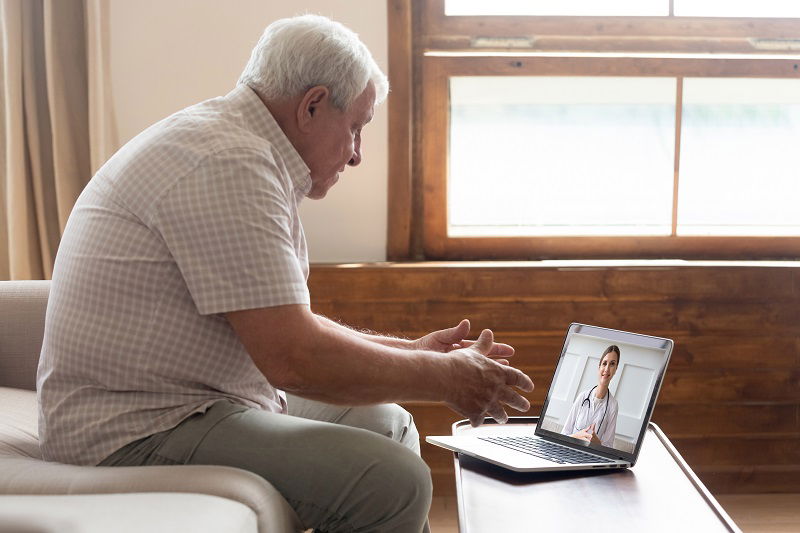The pandemic has forced a lot of changes in healthcare, but this is especially true for hearing professionals. Through these changes, hearing professionals have the unique opportunity to develop meaningful patient interactions and provide services to those who may otherwise have no access to much-needed care. In-person appointments are imperative to properly evaluate those with hearing difficulties. But what if things can be easier? What if things can be different?
In May 2020, a group led by Senator Elizabeth Warren (D-MA) and Rep. Tom Rice (R-SC) sent a letter to Congressional leaders asking to include provisions of the Medicare Audiologist Access and Services Act in COVID-19 relief packages.
“As COVID-19 forces many seniors into isolation, outdated Medicare requirements limit their ability to access the audiology services they need,” the letter states. “Unlike other government programs and private insurers, including Medicare Advantage plans, Medicare currently mandates that beneficiaries obtain a physician order before they are allowed to access an audiologist, even for a hearing test.”
“Medicare laws have never been updated to reclassify audiologists from suppliers to practitioners,” the letter continues. “Due to this shortfall, audiologists are excluded from health professionals who are authorized by statute to be reimbursed for services provided through telehealth.”
Hearing health and balance are essential, just like other aspects of a person’s health and wellness. Maintaining hearing and balance enables someone to participate in daily activities, prevent injury, and promote a high quality of life. Just as they should not delay seeking care for other health conditions, patients should not delay seeking and obtaining professional hearing assessment and treatment.
Here is how you can move forward with virtual options in hearing services.
Adopt Virtual Tools
Pioneering clinicians are tackling access limitations—via mobile apps, virtual video and more—and finding that patient outcomes are not only just as good as face-to-face interactions, but potentially better in providing greater patient satisfaction.
- Tele-Audiology (also generally known as “telehealth” or “telemedicine”)
A large volume of research reported that telehealth interventions produce positive outcomes. The most consistent benefit has been reported when telehealth is used for communication and counseling or remote monitoring in chronic conditions.[1] You can perform consultation appointments, follow-up appointments and troubleshooting appointments over video; you can reserve your in-person appointment time for hearing evaluations and hearing aid fitting appointments.
Tele-audiology doesn’t require much to implement. With the right software and training, audiologists have an exciting opportunity to be on the forefront of e-health as our nation moves toward non-traditional methods of care.
- E-commerce – An Important Option That Delivers Products Safely
E-commerce allows you to sell products to anyone, anywhere, any time. With e-commerce, buyers can access your store on-the-go or from the comforts of their own home.
You may be thinking, “Ok, e-commerce SOUNDS simple, but it’s probably not that simple” and honestly, you are right; e-commerce takes a lot of work if you want to create a store from scratch. You will need to develop an online store, manage inventory, and ship goods regularly. All of this can create a lot more work than you would like to take on. But there are some e-commerce applications that come complete with a full range of popular audiology products, preloaded onto your e-commerce store. They also take care of shipping and tax, so you don’t have to deal with any of the complicated behind-the-scenes details. Plus, with OTC hearing aids on the horizon, you should seriously consider incorporating e-commerce into your practice.
Offer Support For Digital Services
Technology may not be every ones’ cup of tea; for example, you may be feeling a bit overwhelmed by transitioning to virtual service options. But that is OK! A lot of these digital options have additional support to help you and your patients feel comfortable using them.
Additional forms of support can include:
- Website pages with more information about the virtual services and how they work
- More content including FAQs
- Add a link that allows patients to make their own virtual appointments based on your availability
For your current patients, you will also want to consider creating an email campaign letting them know that they have this service available to them.
For new (and current) patients, you will want to release this news on social media and maybe add a banner to your website so they can’t miss it.
Collaboration Is Key
With anything new, collaboration is so crucial to ensure success. And hearing professionals are not the only ones’ who have been navigating virtual services; device manufacturers and other suppliers will make virtualization that much better.
Prior to the pandemic, work and product design supporting the delivery of audiology services without face-to-face client interactions was just a bonus to the continuation of hearing health care services. Now, it’s almost essential.
In the article 2021 Audiology Outlook: Leaders Weigh in on Key Issues Impacting the Industry, ADA President Victor Bray, PhD said, “It is not uncommon in a crisis to create a new environment where what was an optional, low-utilization tool suddenly becomes a critical high-utilization tool. Such is the case for the practice of audiology and telehealth, especially regarding the remote assessment and programming of hearing devices.”
Virtualization is fast-approaching and not just because of the pandemic; it will enhance and modernize the way hearing professionals do business.
Face-To-Face Appointments Can Still Happen, But Virtual Options Streamline Your Business
The point of this article isn’t to convince you that all in-person appointments are no longer a possibility; this article is meant to educate you on the possibilities that come from virtualization.
While adopting telehealth has been slow due to these reimbursement concerns, there is change happening. Recent policy changes during the COVID-19 pandemic have reduced barriers to telehealth access and have promoted the use of telehealth as a way to deliver acute, chronic, primary and specialty care. [2]
It is imperative to recognize when there are opportunities for face-to-face time or telehealth and that spending some time addressing the digital literacy gap will only help patients become more effective users of the technology necessary to access care remotely.
There is no doubt that audiology private practices can thrive with more virtualization, but it is up to you to adapt and embrace the changes.
[1]Annette M Totten 1, Dana M Womack 1, Karen B Eden 1, Marian S McDonagh 1, Jessica C Griffin 1, Sara Grusing 1, William R Hersh 1 Telehealth: Mapping the Evidence for Patient Outcomes From Systematic Reviews (2016). https://pubmed.ncbi.nlm.nih.gov/27536752/
[2] Using Telehealth to Expand Access to Essential Health Services during the COVID-19 Pandemic (June 10, 2020). https://www.cdc.gov/coronavirus/2019-ncov/hcp/telehealth.html




